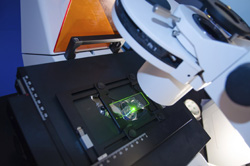Advanced imaging at the molecular level
The majority of biological processes entail a complex interplay among different macromolecules such as proteins, sugars, lipids and nucleotides. To understand and monitor these processes and their impact on tissue physiology, scientists have employed fluorescence imaging techniques. Fluorescence-lifetime imaging microscopy (FLIM) is a technique that relies on the decay of fluorescence measuring the changes either of the spectral intensity or of the lifetime of the fluorescence. As a result, it could be used to discriminate among different environments and to provide information about the labelled molecules and their interactions. Based on this, the EU-funded PARAFLUO(opens in new window) project aimed to address the rising quest for analytical instrumentation suitable in this field. To this end, project partners set out to develop optoelectronic instrumentation capable of carrying out spectrally resolved FLIM. Project activities included the design of a photon-counting array detector based on the silicon single-photon avalanche diode technology. Additionally, a microlens system was fabricated and integrated onto the detector alongside a multi-channel time-correlated single-photon counting system. The whole setup was attached to a confocal microscope to facilitate visualisation of labelled cells or tissues. The advanced optoelectronic instrumentation generated by PARAFLUO small businesses will enhance their competitiveness in the European market. From a research viewpoint, it will help to unravel the molecular machines that orchestrate cellular processes and to gain better insight into key medical issues.







